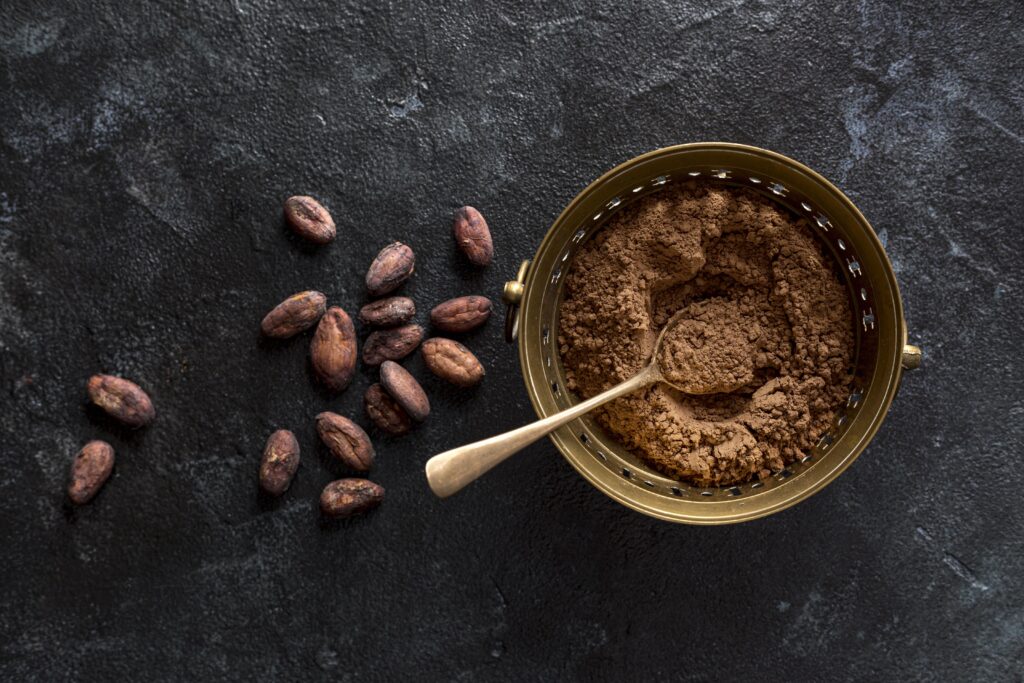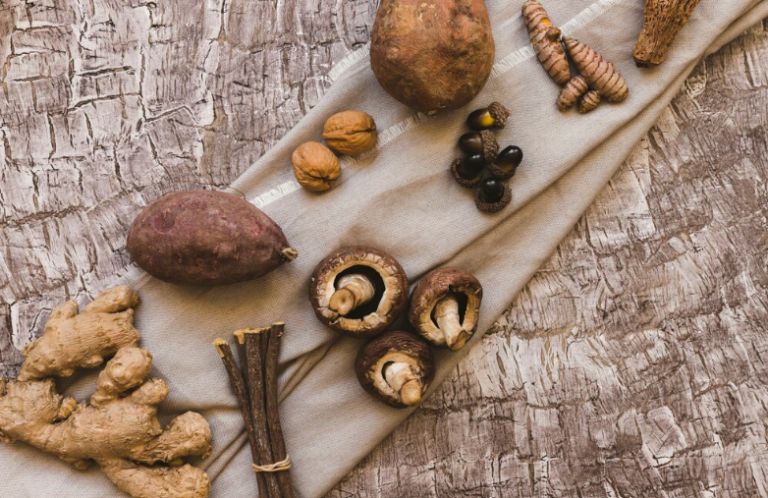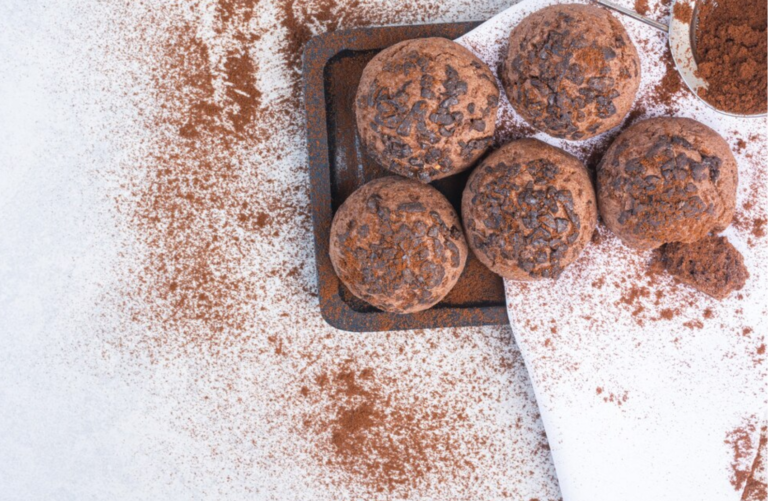
9 Delicious Ways to Brew the Perfect Cup of MannaBrew
MannaBrew is rapidly becoming a popular alternative for those who want to enjoy the rich, full-bodied experience of coffee without the caffeine that often comes with it. Made from nutrient-packed

Cacao has long captivated taste buds around the world, cherished not just for its rich flavour but also for its role in various cultural traditions.
Recently, ceremonial cacao has garnered attention, piquing the curiosity of enthusiasts eager to explore its deep roots and unique benefits.
This article will delve into the essence of ceremonial and regular cacao, comparing their nutritional profiles, culinary applications, and their broader impact on health and culture.
We’ll explore everything from how each type is processed to its taste and texture, and even how you can use ceremonial cacao in your own kitchen.
Whether you’re a chocolate aficionado or a newcomer to the world of cacao, this journey through the contrasts and contributions of ceremonial versus regular cacao will surely enrich your understanding and appreciation of this extraordinary ingredient.
Experience the rich, authentic taste of ceremonial cacao. Order today and taste the difference.
Cacao, the primary ingredient in all chocolate, comes from the Theobroma cacao tree, aptly named the “food of the gods.”
This prestigious title hints at cacao’s exalted role across civilisations, particularly in ancient Mesoamerican cultures, where it was a valued beverage and currency.
The transformation of cacao from bean to the chocolate products we enjoy involves a meticulous process that is both an art and a science:
Each of these steps is crucial in shaping the final taste and quality of chocolate, highlighting cacao’s transformation from a simple bean to a complex, culturally rich ingredient enjoyed worldwide.
Ceremonial cacao stands apart from regular cacao due to its deep cultural roots and traditional preparation methods.
This special type of cacao is primarily used in spiritual and healing ceremonies, reflecting its significant role in ancient rituals, particularly among Indigenous communities in Central and South America.
Unlike everyday chocolate, ceremonial cacao is celebrated for its purity and the mindful approach to its production.
Ceremonial cacao is made from whole cacao beans that are minimally processed to retain their natural properties and energies. Historically, it was consumed by elders and spiritual leaders during rituals to facilitate deep meditation and connection with the divine. Today, it continues to be used in modern rituals aimed at healing, grounding, and personal transformation, offering a bridge to the sacred practices of the past.
The preparation of ceremonial cacao differs significantly from that of regular cacao, mainly in its respect for traditional methods and its focus on spiritual quality:
This mindful approach preserves the beans’ natural properties and enhances the spiritual and therapeutic potential of the ceremonial cacao, making it a powerful tool in ceremonial practices.
As we explore ceremonial cacao‘s traditional significance, remember that Life Within offers authentic products that honor these age-old traditions, helping you connect with the roots of cacao in the most genuine way.
Regular cacao, familiar to most consumers, forms the basis of many popular chocolate products.
It comes in several forms, each suited to different culinary uses, from baking to beverage-making.
The most common forms include cacao powder, cacao nibs, and various types of chocolate bars.
The production of regular cacao is a large-scale, mechanised process designed to meet global demand and maintain consistency in mass-market products.
This process typically includes:
This efficient, standardised production allows regular cacao to be widely available, offering various chocolate experiences to consumers around the globe.
However, more spiritual and cultural dimensions are often needed for ceremonial cacao.
While ceremonial and regular cacao originate from the same plant, their nutritional profiles can differ significantly due to variations in processing.
Here, we compare their nutritional content and outline the health benefits each offers:
A. Ceremonial Cacao: Due to minimal processing, ceremonial cacao typically retains more of the natural nutrients in cacao beans. This includes more antioxidants, magnesium, and other essential minerals.
B. Regular Cacao: Although still beneficial, the additional processing and ingredients in regular cacao products can dilute its nutrient density, especially when additives like sugar and milk are involved.
Ceremonial Cacao: High in flavonoids, powerful antioxidants that help reduce oxidative stress and can lower the risk of several diseases.
Regular Cacao: Also contains antioxidants, though in varying amounts depending on the degree of processing and the product type.
Ceremonial Cacao: The magnesium and other heart-healthy compounds present can support cardiovascular health by improving blood flow and lowering blood pressure.
Regular Cacao: Benefits include improved vascular function, although these effects may be less pronounced than ceremonial cacao.
Ceremonial Cacao: Contains compounds that can enhance well-being and foster a sense of relaxation, traditionally used in spiritual practices for its uplifting effects.
Regular Cacao: Offers similar mood-enhancing benefits which are attributed to the presence of theobromine and trace amounts of other mood-improving chemicals.
Ceremonial Cacao: A richer source of minerals like iron and chromium, which are crucial for blood health and glucose metabolism.
Regular Cacao: While still providing these minerals, the content may be reduced by the processing methods used.
In summary, both types of cacao provide valuable nutrients and health benefits, though ceremonial cacao generally offers a purer and possibly more potent nutritional profile due to its traditional and minimal processing techniques.
Understanding the health benefits of both types of cacao can be complex, but Life Within is committed to providing not only products but also education on how each type can enhance your well-being
When choosing ceremonial or regular cacao, it’s important to consider not only the quality of the product, but also its impact on the environment and the communities involved in its production.
Here’s how you can make informed decisions that align with both quality and ethical sourcing:
Look for products labelled as “100% pure ceremonial grade, ” indicating minimal processing and no additives.
Choose cacao that is organic and non-GMO to ensure it’s free from harmful chemicals and alterations.
For high-quality regular cacao, check for labels like “single origin,” which can signify a purer product that is not mixed with beans from multiple locations.
Opt for higher cocoa content in chocolate products; the higher the percentage, the purer the cacao content.
A. Fair Trade Certification: Opt for products that are Fair Trade certified, which ensures that the farmers receive a fair wage for their cacao, contributing to better community welfare.
B. Support for Indigenous Communities: Particularly for ceremonial cacao, it’s beneficial to buy from companies that directly support the indigenous communities where cacao is a native crop. These initiatives help preserve cultural traditions and ensure the sustainability of their livelihoods.
C. Environmental Impact: Choose cacao products from companies that employ sustainable farming practices, such as shade-grown cacao, which helps preserve biodiversity and reduces the need for chemical fertilisers and pesticides. Look for minimal packaging or packaging made from recycled or biodegradable materials to reduce environmental impact.
A. Transparency in Supply Chain: Support companies that provide clear information about where their cacao comes from and how it’s processed. Transparency is key to ensuring ethical practices throughout the supply chain.
B. Community Involvement: Some companies reinvest a portion of their profits back into the cacao-producing communities. Choosing these products can help foster economic and social development.
By being mindful of these aspects, consumers can enjoy high-quality cacao while contributing to the well-being of the environment and the people who cultivate it.
This conscientious approach ensures that our enjoyment of cacao products is both satisfying and responsible.
When choosing your cacao, consider Life Within, a company dedicated to ethical sourcing and supporting indigenous communities, ensuring that your purchase helps contribute to sustainability and fair practices.
Throughout this exploration of ceremonial and regular cacao, we’ve uncovered a world where tradition meets modernity, and taste meets health benefits.
Ceremonial cacao, with its rich spiritual and cultural roots, offers a minimally processed experience that retains more of the bean’s natural nutrients and connects us to ancient rituals.
On the other hand, regular cacao, available in various forms like powder, nibs, and chocolate bars, provides versatility in culinary uses and brings its own set of health benefits, though slightly altered by more intensive processing techniques.
Both types of cacao offer valuable health benefits, including antioxidants, heart health support, and mood enhancement, albeit in varying degrees due to their processing differences.
Let Life Within guide you as you explore the distinctive qualities and benefits of ceremonial and regular cacao.
Together, we can uncover cacao’s deep flavors and rich traditions, making every sip and bite more meaningful.
Experience the subtle yet powerful benefits of ceremonial cacao—order yours today.

MannaBrew is rapidly becoming a popular alternative for those who want to enjoy the rich, full-bodied experience of coffee without the caffeine that often comes with it. Made from nutrient-packed

Choosing organic foods is not just about keeping up with a trend; it’s a deliberate and informed decision prioritising your health and overall well-being. Organic foods are cultivated without synthetic

Making cookies at home is a fun and rewarding activity and an opportunity to take control of the ingredients and flavours in your treats. By choosing cacao over processed cocoa,
© 2024 All Rights Reserved.